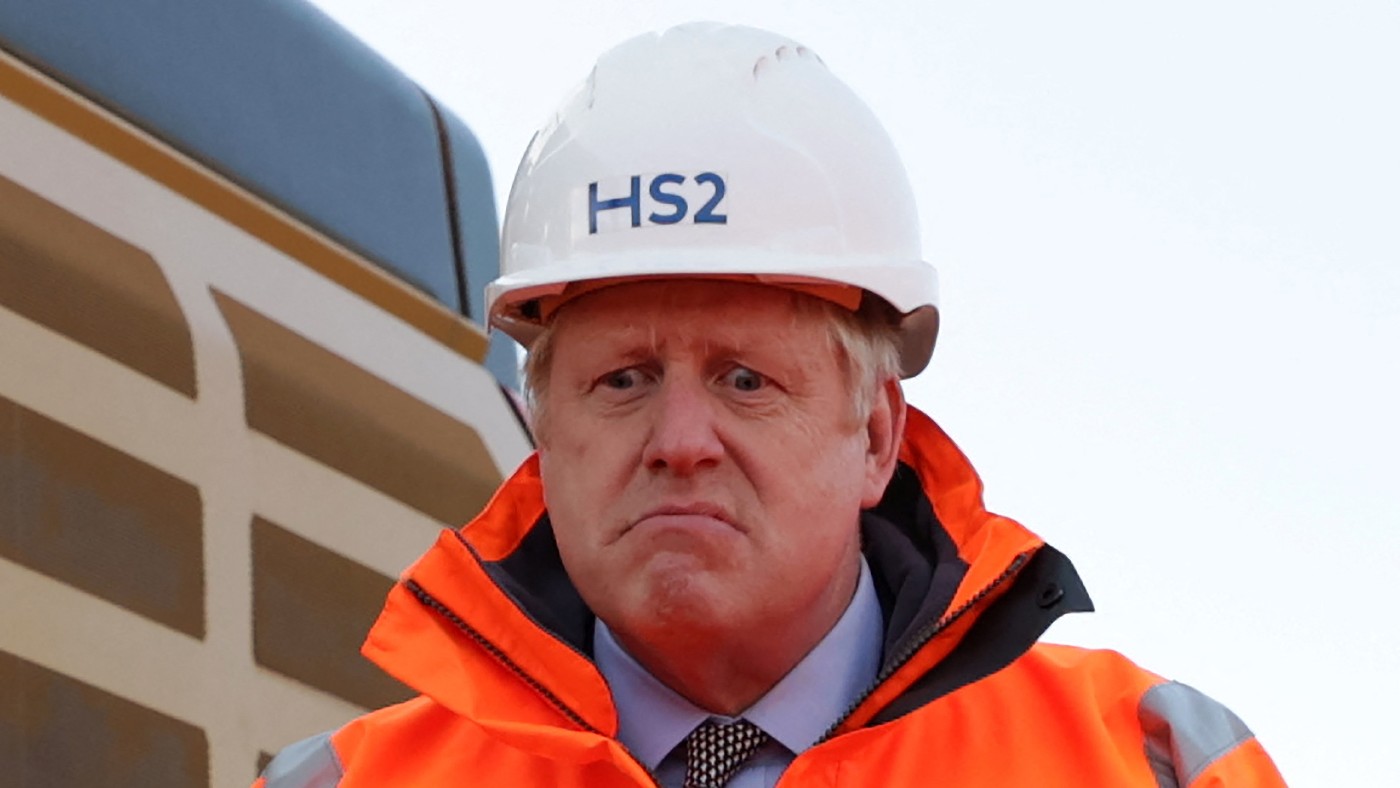Giant cruise ships: monsters of the high seas
Today’s ships are more than twice the size of those built in the 1990s

The world’s largest cruise ship is getting ready for its maiden voyage.
The Icon of the Seas, built for Royal Caribbean, is 1,198 feet long with a gross tonnage of 250,800. That’s over 300 feet longer and five times bigger than the Titanic, which weighed 52,310 tonnes (the Icon is only 300 feet shorter than the longest ship in history, the supertanker Seawise Giant).
Built in Turku, Finland, by a daily roster of up to 2,600 workers, the ship has berths for some 5,610 passengers and 2,350 crew. Having undergone sea trials early this year, it is scheduled to embark on its maiden voyage in January, setting sail from Miami to the Caribbean. Tickets won’t come cheap: a seven-day Caribbean cruise in an interior cabin (with no natural light) will cost about $1,000pp; a berth in a “Sunset Suite” will cost more than $10,000. Three-storey “townhouses” will cost $75,000.
The Week
Escape your echo chamber. Get the facts behind the news, plus analysis from multiple perspectives.

Sign up for The Week's Free Newsletters
From our morning news briefing to a weekly Good News Newsletter, get the best of The Week delivered directly to your inbox.
From our morning news briefing to a weekly Good News Newsletter, get the best of The Week delivered directly to your inbox.
What is life like on board?
The ship has 20 decks, and eight “neighbourhoods” – each aimed at a range of passengers, from families with young children to older adults seeking a quieter holiday. There will be more than 40 bars, restaurants and “nightlife experiences”, as well as mini golf, rock climbing, an arcade and an ice rink. There’s also a 55-foot waterfall, a five-deck tall open-air “Central Park” with living plant walls, seven swimming pools – each with its own “unique vibe” – and six water slides, in the ship’s own “water park”. It cost more than $2bn to build – but not everyone has been impressed. When the first images were released, one critic called it a “monstrosity”. Its bright candy colours have attracted particular opprobrium, and it has been dubbed the “human lasagne” (because it will contain so many thousands of people between its layers). Even so, tickets have been selling at record rates.
Why is the ship so big?
The modern cruising industry emerged in the 1960s, when ships catered for a few hundred people at a time. But since the late 1980s, these vessels have been replaced by “megaships”: huge floating hotels capable of carrying thousands of passengers, and offering a dizzying array of facilities, from skydiving simulators to bumper cars. Today’s ships are more than twice the size of those built in the 1990s: Royal Caribbean has launched three ships over 220,000 tonnes since 2016. Rivals such as MSC Cruises, P&O Cruises and Carnival have also built their own mega-ships. These are designed, firstly, for efficiency – to maximise the number of passengers, and rooms with sea views; Royal Caribbean says that its larger ships break even at just 35% of capacity. Secondly, they reflect the fact that the ships themselves have become, to an extent, the destination: ports of call have become almost secondary, and megaships can offer more amenities.

How popular are they?
Hugely. Until relatively recently, cruises were largely the preserve of “newly-weds and nearly-deads”: in 1995, the average age of a cruiser was 65. But as ticket prices have fallen, cruises have come to be seen by millions as a good-value family holiday option, and the average age of passengers has dropped to the late 40s. And although annual cruise ship passenger numbers plummeted during the pandemic (from 29.7 million in 2019 to 5.8 million in 2020 and 4.8 million in 2021), they have rebounded strongly: this year, the number of people going on cruises is expected to climb to a record high of 31.5 million. On average, about half of annual cruise ship passengers come from the US; while the UK, Germany and China each also account for around two million passengers a year.
How safe are they?
Modern cruises are very safe. According to Forbes, the odds of dying on a cruise ship are roughly 1 in 6.25 million. However, there have been some high-profile disasters. In 2012, the Costa Concordia sank after hitting rocks off the Italian island of Giglio; 32 people died. In 2019, nearly 500 people had to be evacuated by helicopter from the Viking Sky after its engines failed in heavy seas off the coast of Norway. On the so-called “Poop cruise” of 2013, the Carnival Triumph lost power in the Gulf of Mexico, drifting for five days without power or water as raw sewage backed up and seeped onto passenger decks.
A free daily email with the biggest news stories of the day – and the best features from TheWeek.com
Cruise ships are also effective at spreading infectious diseases: there have been 13 norovirus outbreaks recorded in the US this year. During early parts of the Covid pandemic, as the world went into lockdown in early 2020, at least ten ships – carrying nearly 10,000 passengers – were stuck at sea, having been turned away from their destinations. By May 2020, more than 40 cruise ships had confirmed Covid cases on board. The worst outbreak took hold on the Diamond Princess, which was quarantined for two weeks in Yokohama, Japan: at least 712 of the 3,711 passengers and crew on board became infected; 14 died.
How do they affect areas they visit?
The most popular destination is the Caribbean, which absorbs about a third of industry capacity, followed by the Mediterranean and then other European waters. Alaska and Hawaii are also busy. Cruise ships can pose challenges to the areas they visit, not least because tourists often leave their ships only for a few hours, briefly swamping ports before returning to the boat, without spending much money. In 2021, large cruise ships were banned from entering the Venice lagoon following complaints that the city’s 51,000 population was often swollen by more than 40,000 cruise passengers. Last week, Amsterdam voted to close its cruise ship terminal, to end what one politician called the “locust plague” of cruise tourists. Curbs on ships have also been imposed in cities such as Dubrovnik and Palma in Mallorca. In the Caribbean, operators have had to lease a number of private islands – Disney Cruise Line’s Castaway Cay, and Royal Caribbean’s CocoCay – to cater for their customers.
What about the environmental impact?
The biggest cruise ships generate up to 3.8 million litres of grey water (from sinks, baths, showers etc.) and 795,000 litres of sewage over the course of a one-week voyage, according to Friends of the Earth. Guidelines issued by the Cruise Lines International Association stipulate that sewage and grey water must be discharged at least four nautical miles from land; sewage must be treated beforehand (though standards of treatment vary). The heavy fuel oil used by most cruise ships is another problem: passengers on a seven-day Antarctic cruise can produce as much CO2 as the average European in an entire year. In June, a report by climate lobbyists Transport & Environment found that the 218 cruise ships operating in Europe last year pumped out more toxic sulphuric gases than a billion cars.
Can cruises become greener?
Of 20 or so ships currently on order, seven – including the Icon of the Seas – are due to be powered by greener liquid natural gas, which cuts CO2 emissions by about 25%, and contains little sulphur and nitrogen oxide. Newer ships also have more advanced wastewater treatment systems. But by and large, cruising remains a conspicuously non eco-friendly way of taking a holiday.
-
 Into the Woods: a ‘hypnotic’ production
Into the Woods: a ‘hypnotic’ productionThe Week Recommends Jordan Fein’s revival of the much-loved Stephen Sondheim musical is ‘sharp, propulsive and often very funny’
-
 ‘Let 2026 be a year of reckoning’
‘Let 2026 be a year of reckoning’Instant Opinion Opinion, comment and editorials of the day
-
 Why is Iran facing its biggest protests in years?
Why is Iran facing its biggest protests in years?TODAY’S BIG QUESTION Iranians are taking to the streets as a growing movement of civic unrest threatens a fragile stability
-
 Italian authorities looking into Venice tourist bus crash that killed 21
Italian authorities looking into Venice tourist bus crash that killed 21Speed Read Flags flying at half-mast after 'apocalyptic' incident
-
 Wind-powered cargo ship takes maiden voyage
Wind-powered cargo ship takes maiden voyagefeature Good news stories from the past seven days
-
 HS2: is this the end of the line?
HS2: is this the end of the line?Talking Point The costs of the track have steadily risen even as the potential gains have diminished say detractors
-
 The long wait for HS2
The long wait for HS2feature Europe’s biggest infrastructure project is facing long delays and ever-rising costs
-
 Going electric: the drive to turbocharge a car revolution
Going electric: the drive to turbocharge a car revolutionTalking Point The US EPA has imposed regulations on car makers to increase production of electric vehicles
-
 Flybe: turbulence prompts a second nosedive
Flybe: turbulence prompts a second nosedivefeature Airline’s latest collapse is a blow to ‘regional connectivity’
-
 Bus fares across England to be capped at £2 from January
Bus fares across England to be capped at £2 from Januaryfeature Good news stories from the past seven days
-
 The rise of the superyacht
The rise of the superyachtIn Depth The super-rich are taking to the seas in increasingly large and lavishly equipped yachts